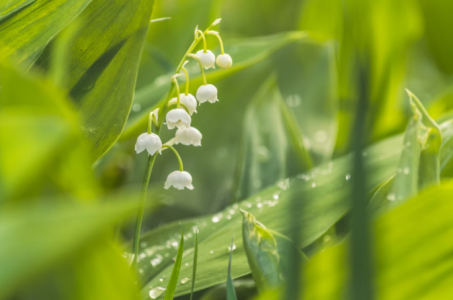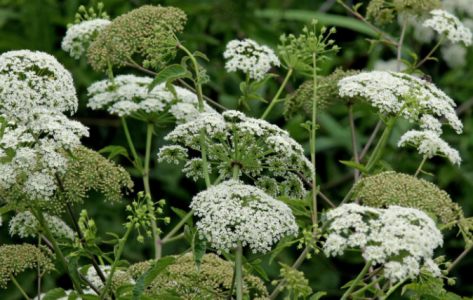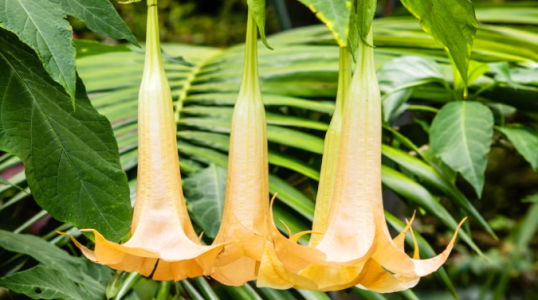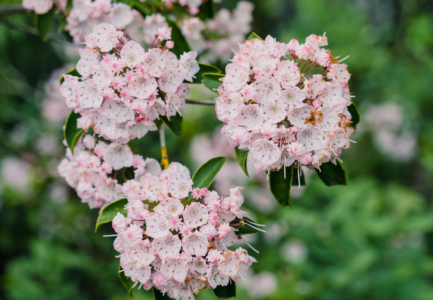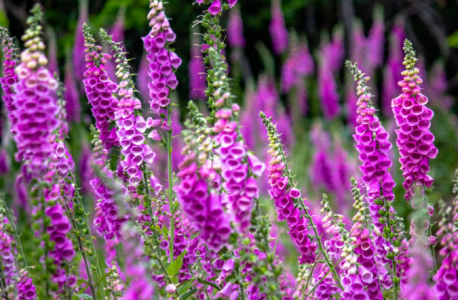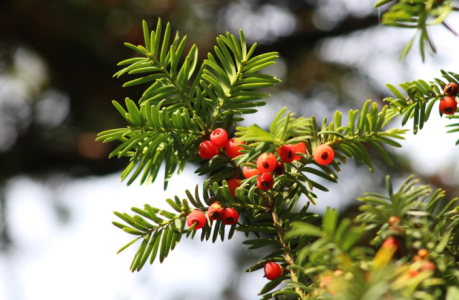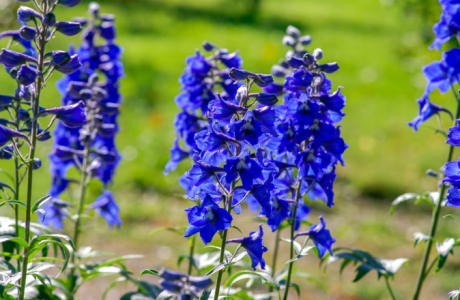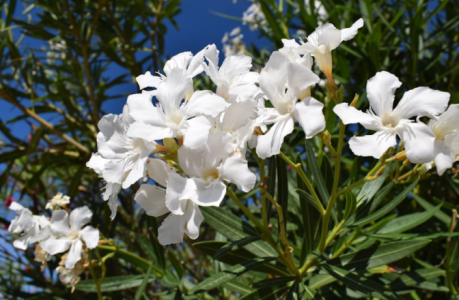Toxic beauty: 14 flowers and plants to be cautious about
- Replies 0
Not all plants that brighten our gardens or homes are as harmless as they look, and some of the most popular ones are among the most dangerous.
Experts warn that a number of decorative flowers and shrubs contain toxins that pose serious risks to both people and pets.
While many of these plants remain garden favorites, ingesting or even handling them can lead to troubling symptoms or worse.
Knowing what you’re planting or keeping indoors could be the difference between beauty and hidden danger.
Lily of the Valley
This spring groundcover looks delicate, but every part is poisonous, capable of causing blurred vision, stomach pain, disorientation, or fainting. Its elegance and royal associations have kept it popular despite the risks.
Queen Victoria and Kate Middleton carried it in their wedding bouquets, showing how tradition sometimes overrides safety. Still, it remains a dangerous plant for households with pets or children
Oleander
Widely found in warm climates, oleander produces vibrant pink, red, orange, or white flowers that hide its severe toxicity. Ingesting any part of this shrub can cause slowed heartbeat, confusion, skin rashes, or even death in children.
Despite these risks, it is still sold in garden centers, which can mislead homeowners about its safety. Planting it without awareness can create serious hazards in residential landscapes.
Angel’s Trumpet
Known for its massive flaring blooms, this plant contains toxins that affect the nervous system, eyes, digestion, and heart. Exposure can result in hallucinations, seizures, paralysis, or even death.
Its flowers, foliage, and seeds are equally poisonous, making it especially dangerous for curious pets. What seems like a show-stopper in the garden can actually mask life-threatening risks.
Water Hemlock
Often mistaken for wild carrots, this plant is considered by the USDA as the most violently toxic in North America. Its roots and hollow stems contain cicutoxin, which can cause seizures, convulsions, abdominal pain, and rapid death.
Hikers and pet owners are most at risk due to its deceptive appearance in meadows and along trails. Unlike many others on this list, it usually isn’t sold in garden centers.
Lupine
Tall and colorful, lupine’s beauty and benefits to pollinators hide its harmful side. Alkaloids within the plant can trigger nausea, breathing problems, and seizures in humans and animals.
While admired for its dramatic spires, it can cause serious illness if accidentally ingested. This makes it a risky but common choice in many home gardens.
Crocus
Although saffron-producing Crocus sativus is harmless, Colchicum autumnale is dangerously toxic. It contains colchicine, which can cause diarrhea, liver damage, and seizures in both people and pets.
Many gardeners plant crocuses for their bright spring color without realizing some varieties carry such risks. Careful identification is essential before planting or handling them.
Mountain Laurel
Bright clusters of pink or white blooms make this a favorite ornamental in shady areas, but the danger lies in its leaves. Ingesting them can result in vomiting, seizures, and convulsions, while honey made from their nectar can also be toxic.
As Pennsylvania and Connecticut’s state flower, it has cultural significance. Yet its risks make it unsafe for homes with children or pets.
Foxglove
With tall spears of speckled blossoms, foxglove is visually striking but highly poisonous. Both fresh and dried forms contain compounds that can disrupt heart function.
In severe cases, consuming it can be fatal. While iconic in cottage gardens, its risks are too high for casual handling.
Dieffenbachia
Known as dumb cane, this popular houseplant contains oxalates that can cause swelling, drooling, or even temporary loss of speech if chewed.
Pets and children are particularly vulnerable to its hidden dangers. Related philodendrons carry the same toxic properties. Despite its stylish foliage, it’s one of the riskiest indoor plants to keep.
Daffodils
A staple of spring, daffodils are loved for their cheerful yellow, white, or pink trumpets. However, bulbs, stems, and leaves contain lycorine, which can cause vomiting, diarrhea, seizures, or heart irregularities.
Even animals instinctively avoid them, hinting at their toxic properties. Their popularity masks just how hazardous they can be if consumed.
Yews
Evergreen yews, whether English or Japanese varieties, are extremely toxic and can cause breathing difficulties, tremors, or death. Their evergreen appeal makes them a common choice for hedges and borders.
Toxins are especially concentrated in the leaves during winter, increasing seasonal risks. Homeowners often overlook the danger because of their traditional landscape use.
Larkspur
Also known as delphinium, larkspur adds height and color to gardens but carries potent alkaloids. These compounds act on the nervous system, causing paralysis or death in severe cases.
Both pets and humans are at risk from ingestion. Its attractive blooms come with a hidden and serious cost.
Virginia Creeper
This fast-growing vine offers brilliant fall color but poses risks due to its berries and foliage. Consumption can cause nausea, vomiting, and stomach distress, particularly in children.
Pets are vulnerable as well, making it an unsafe choice despite its decorative appeal. What looks like a harmless cover plant can quickly become dangerous.
Caladium
Popularly called elephant ears, caladiums are prized for their colorful leaves but conceal toxic oxalates. Ingesting any part can cause mouth and throat burning, nausea, or even eye damage.
Their bold appearance makes them popular in shade gardens, yet their risks are significant. Gardeners should avoid planting them where children or pets play.
Read next:

Have you ever grown one of these without realizing how toxic it could be or taken steps to replace dangerous plants in your yard? Share your experiences in the comments so others can learn what to avoid or handle with extreme caution.
Experts warn that a number of decorative flowers and shrubs contain toxins that pose serious risks to both people and pets.
While many of these plants remain garden favorites, ingesting or even handling them can lead to troubling symptoms or worse.
Knowing what you’re planting or keeping indoors could be the difference between beauty and hidden danger.
Lily of the Valley
This spring groundcover looks delicate, but every part is poisonous, capable of causing blurred vision, stomach pain, disorientation, or fainting. Its elegance and royal associations have kept it popular despite the risks.
Queen Victoria and Kate Middleton carried it in their wedding bouquets, showing how tradition sometimes overrides safety. Still, it remains a dangerous plant for households with pets or children
Oleander
Widely found in warm climates, oleander produces vibrant pink, red, orange, or white flowers that hide its severe toxicity. Ingesting any part of this shrub can cause slowed heartbeat, confusion, skin rashes, or even death in children.
Despite these risks, it is still sold in garden centers, which can mislead homeowners about its safety. Planting it without awareness can create serious hazards in residential landscapes.
Angel’s Trumpet
Known for its massive flaring blooms, this plant contains toxins that affect the nervous system, eyes, digestion, and heart. Exposure can result in hallucinations, seizures, paralysis, or even death.
Its flowers, foliage, and seeds are equally poisonous, making it especially dangerous for curious pets. What seems like a show-stopper in the garden can actually mask life-threatening risks.
Water Hemlock
Often mistaken for wild carrots, this plant is considered by the USDA as the most violently toxic in North America. Its roots and hollow stems contain cicutoxin, which can cause seizures, convulsions, abdominal pain, and rapid death.
Hikers and pet owners are most at risk due to its deceptive appearance in meadows and along trails. Unlike many others on this list, it usually isn’t sold in garden centers.
Lupine
Tall and colorful, lupine’s beauty and benefits to pollinators hide its harmful side. Alkaloids within the plant can trigger nausea, breathing problems, and seizures in humans and animals.
While admired for its dramatic spires, it can cause serious illness if accidentally ingested. This makes it a risky but common choice in many home gardens.
Crocus
Although saffron-producing Crocus sativus is harmless, Colchicum autumnale is dangerously toxic. It contains colchicine, which can cause diarrhea, liver damage, and seizures in both people and pets.
Many gardeners plant crocuses for their bright spring color without realizing some varieties carry such risks. Careful identification is essential before planting or handling them.
Mountain Laurel
Bright clusters of pink or white blooms make this a favorite ornamental in shady areas, but the danger lies in its leaves. Ingesting them can result in vomiting, seizures, and convulsions, while honey made from their nectar can also be toxic.
As Pennsylvania and Connecticut’s state flower, it has cultural significance. Yet its risks make it unsafe for homes with children or pets.
Foxglove
With tall spears of speckled blossoms, foxglove is visually striking but highly poisonous. Both fresh and dried forms contain compounds that can disrupt heart function.
In severe cases, consuming it can be fatal. While iconic in cottage gardens, its risks are too high for casual handling.
Dieffenbachia
Known as dumb cane, this popular houseplant contains oxalates that can cause swelling, drooling, or even temporary loss of speech if chewed.
Pets and children are particularly vulnerable to its hidden dangers. Related philodendrons carry the same toxic properties. Despite its stylish foliage, it’s one of the riskiest indoor plants to keep.
Daffodils
A staple of spring, daffodils are loved for their cheerful yellow, white, or pink trumpets. However, bulbs, stems, and leaves contain lycorine, which can cause vomiting, diarrhea, seizures, or heart irregularities.
Even animals instinctively avoid them, hinting at their toxic properties. Their popularity masks just how hazardous they can be if consumed.
Yews
Evergreen yews, whether English or Japanese varieties, are extremely toxic and can cause breathing difficulties, tremors, or death. Their evergreen appeal makes them a common choice for hedges and borders.
Toxins are especially concentrated in the leaves during winter, increasing seasonal risks. Homeowners often overlook the danger because of their traditional landscape use.
Larkspur
Also known as delphinium, larkspur adds height and color to gardens but carries potent alkaloids. These compounds act on the nervous system, causing paralysis or death in severe cases.
Both pets and humans are at risk from ingestion. Its attractive blooms come with a hidden and serious cost.
Virginia Creeper
This fast-growing vine offers brilliant fall color but poses risks due to its berries and foliage. Consumption can cause nausea, vomiting, and stomach distress, particularly in children.
Pets are vulnerable as well, making it an unsafe choice despite its decorative appeal. What looks like a harmless cover plant can quickly become dangerous.
Caladium
Popularly called elephant ears, caladiums are prized for their colorful leaves but conceal toxic oxalates. Ingesting any part can cause mouth and throat burning, nausea, or even eye damage.
Their bold appearance makes them popular in shade gardens, yet their risks are significant. Gardeners should avoid planting them where children or pets play.
Read next:
- This Dangerous Plant Can Ruin Your Health—Here’s How to Spot It Before It’s Too Late!
- Say goodbye to aphids! Discover 8 plants garden experts swear by for a pest-free summer
Key Takeaways
- Many popular flowers and shrubs, including daffodils, oleander, and foxglove, are highly toxic despite their beauty.
- Symptoms from exposure range from nausea and skin irritation to seizures, heart complications, and even death.
- Pets and children are at particular risk, with some plants also threatening hikers who mistake toxic species for safe ones.
- Knowing the risks before planting or handling these plants can prevent serious health emergencies.

